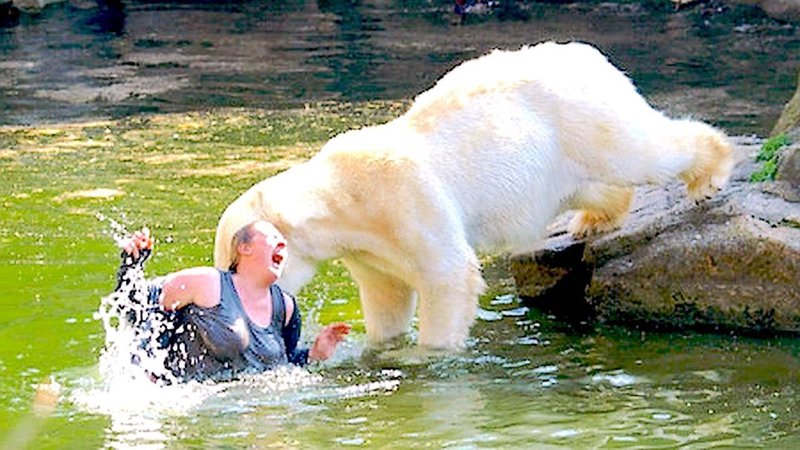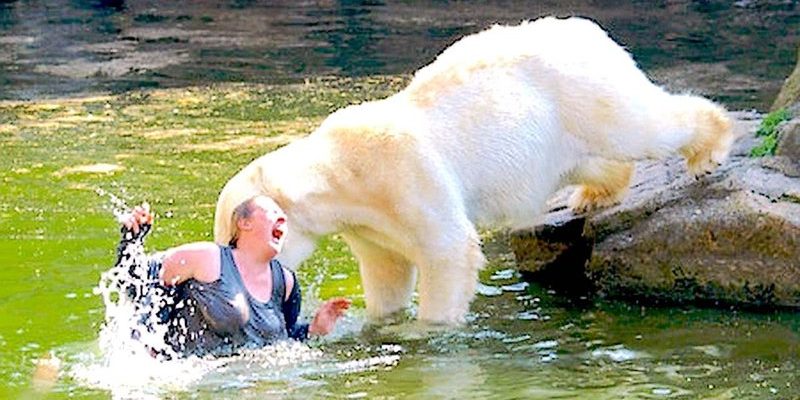
Imagine you’re on a cold, icy landscape, and suddenly a massive polar bear appears. Its sheer size and strength can be intimidating. Honestly, that’s not just a scene from a documentary—it’s a reality for many people who live in polar bear territories. But how often do these encounters turn dangerous? And what should we know to stay safe? Let’s dive into the world of polar bears and explore their behavior, habitats, and the risks they can present to humans.
Understanding Polar Bear Behavior
Polar bears, scientifically known as *Ursus maritimus*, thrive in cold habitats. They are excellent swimmers and have a keen sense of smell, which they use to hunt seals, their primary food source. To grasp why polar bears can be dangerous, we need to understand their instincts and behaviors.
Polar bears might look cuddly, but they are powerful predators. They are known to weigh between 900 to 1,600 pounds, depending on their age and health. An adult polar bear can run as fast as a human over short distances, and their strength is unmatched in the animal kingdom. Here’s the thing: when they feel threatened or hungry, their natural instincts kick in, which can lead to dangerous encounters with humans.
Also, polar bears are solitary animals. Unlike wolves or lions, they don’t typically hunt in packs, which means an encounter might be just one bear meeting one human. This isolation can sometimes lead to unpredictable behavior, especially if the bear perceives a human as a threat or a potential meal.
Where Polar Bears and Humans Interact
You might be wondering where these interactions typically happen. Polar bears inhabit remote regions like the Arctic, where they primarily live on sea ice. As climate change continues to affect their habitat, these majestic creatures are finding it harder to hunt for seals. This often leads them to venture closer to human settlements in search of food.
In places like Alaska, Canada, and parts of Russia, communities are adapting to living alongside polar bears. You may see signs guiding people on what to do if they encounter one. The key is to respect their space and understand their needs. Nevertheless, with more bears wandering into human territories, the chances of dangerous encounters are increasing. It’s a bit like living next to a volcano; you can admire its beauty, but you need to stay alert to its power.
How Do Polar Bears Become Dangerous?
The danger from polar bears usually arises in two main scenarios: defensive attacks and predatory behavior. Understanding these can help you appreciate when polar bears can be dangerous to humans.
Defensive attacks occur when a polar bear feels threatened. If a bear comes across a human in what it thinks is its territory, it might react aggressively to protect itself. This is especially true if a female bear is with her cubs. Imagine a mother protecting her young—any perceived danger will trigger her protective instincts. Most encounters that lead to attacks happen when people are too close to a bear that is feeding or resting.
On the other hand, predatory behavior is when a polar bear sees a human as a potential food source. This might sound terrifying, but it’s essential to note that polar bears typically prefer seals. However, starving bears, which are becoming more common due to climate change, might view humans as an alternative food option. The reality is, if a polar bear is hungry enough, it may approach humans to investigate.
How to Stay Safe Around Polar Bears
If you find yourself in polar bear territory, knowing how to stay safe is crucial. Here are some practical tips to help you avoid dangerous encounters:
- Keep your distance: Always respect wildlife. If you see a polar bear, keep a safe distance. Using binoculars or a camera with a zoom lens is a great way to observe them without getting too close.
- Make noise: If you’re hiking or exploring in polar bear territory, make some noise. Bears are more likely to avoid humans if they can hear you coming.
- Be aware of your surroundings: Always be vigilant. Look for tracks or signs of bears in the area, especially if you’re in a remote location.
- Travel in groups: There’s safety in numbers. If you’re in bear country, traveling with others can deter bears from approaching.
These steps are pretty straightforward, but when in bear territory, they can be lifesavers.
Polar Bear Attacks: Real-Life Incidents
It’s essential to recognize that polar bear attacks, while rare, do happen. Let’s look at a few real-life incidents to understand better how these situations can unfold.
In one instance in Alaska, a polar bear attacked a camp of scientists studying climate change. The bear, likely hungry and disoriented, entered the camp, leading to a tragic situation. Thankfully, the scientists had the training to respond quickly, but it serves as a stark reminder of the risks involved in polar bear habitats.
In another case, a hunter in Canada came too close to a bear protecting its cubs. The bear charged, leading to a defensive attack, leaving the hunter injured. These examples underscore the importance of respecting polar bears and their natural behaviors.
While these incidents can sound alarming, they are exceptions rather than the norm. Most people who respect polar bears and their environment will avoid dangerous encounters.
The Impact of Climate Change on Polar Bear Behavior
You might be curious how climate change is affecting polar bear behavior and their interactions with humans. As the Arctic ice melts, polar bears are losing their natural habitat and food sources. This leads them to wander closer to coastal communities, searching for anything they can eat.
The decline of sea ice means that bears are spending more time on land, where their natural instincts can lead to more dangerous encounters with humans. This shift in behavior makes it crucial for communities to develop strategies to coexist with these magnificent animals.
Moreover, as their food sources dwindle, the possibility of polar bears becoming more aggressive in their search for sustenance increases. It’s like a domino effect; the loss of ice leads to fewer seals and, ultimately, bears venturing into human territory.
Polar bears are truly remarkable creatures, but they can indeed be dangerous to humans. Understanding their behavior, respecting their space, and being aware of the risks involved are key to coexisting peacefully with these iconic animals. Remember, while it’s thrilling to think about polar bears in their natural habitat, safety must always come first.
As we face the challenges of climate change together, let’s strive to protect both polar bears and ourselves. By respecting their natural habitat and learning how to navigate polar bear territory safely, we can appreciate their beauty without putting ourselves in harm’s way. Embracing this knowledge makes us better stewards of the planet and its remarkable wildlife.

